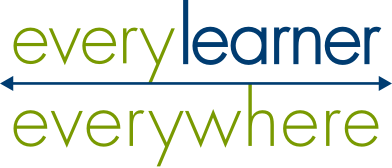In some ways, finishing the school year at home was easier for Georgia Southern University freshman Jayce Mays than it would have been if he’d still been on campus.
Before the COVID-19 pandemic, Mays had been working two on-campus jobs as well as taking a full course load. When he moved home, he found work as a delivery driver for DoorDash, which was more flexible than his two on-campus jobs, allowing him to work around his school schedule and even giving him down time for reading.
However, there were significant drawbacks. For example, he felt the transition to remote instruction was uneven across his five courses. And reduced access to student advising may have impacted the learning opportunities he’ll get next year.
Mays’ experience echoes that of hundreds of thousands of first-year college students whose school years were interrupted by the COVID-19 crisis. Many lost housing and jobs, while all classes moved online almost overnight.
Mays adapted and finished out the year, but his experience shows the opportunity universities and community colleges have to improve distance learning during times of crisis, and beyond.
Related reading: Preparing for a Post-COVID Learning Model That Better Serves Disadvantaged Students
An uneven learning experience
Mays was on spring break when he got the news that Georgia Southern University would be closing down the campus for the rest of the year due to COVID-19. Mays, who is planning a major in multimedia production and film, drove back to the university with his mom to move his belongings out of his dorm.
He settled in at home to complete the year virtually, but changing his study habits to do schoolwork from home was a challenge.
“I think of my home as being a chill, relaxed environment,” Mays says. “But with school I actually have to apply myself when I’m at home. That was a hard transition for me.” To help motivate himself, Mays began working out of the room his mother had set up to be her remote-work office.
As a freshman, Mays was primarily taking gateway classes in English, geography, history, and geology. In each of those classes, professors took different approaches to moving the classes online.
The professor of Mays’ geology class filmed himself in front of the whiteboard of an empty classroom and shared slides with students in real time as though he was teaching the class like normal. Another professor sent students slide decks along with a recorded narration. Mays felt these were effective because professors continued to teach as though the students were actually there.
In a third class, students were given links to online videos, asked to answer questions about them, and told to email if they had problems.
“I continued to learn in my geology class, because he was still teaching the material,” says Mays. “But for my other classes, they just gave us the material and we had to teach ourselves. Why would I go to school to do that when I could just look up a few YouTube videos? Most students aren’t going to email to ask you to teach them what you were supposed to be teaching in the first place.”
Missed opportunities for extra support
As part of his expected major in multimedia production and film, Mays had been looking forward to taking part in a new film program scheduled to be introduced at his university next year. But campus was shut down a few days before his meeting with his academic advisor, when he had planned to get more information about the program.
The chaos of students — and their advisors — all coping with working from home meant that meeting never happened. Communicating via email was less convenient than speaking with an advisor in person, and support services were disrupted.
“Some advisors weren’t replying to emails on time because they might have kids of their own, or other stuff they’re taking care of,” says Mays. “It was less available than it would be if we were on campus.”
When Mays returns to Georgia Southern University in the fall, he plans to take the normal film and theater classes required for his major, then get information about the new film program for the following year.
A positive outlook for the future
Along with school and work, Mays has kept himself from feeling too cooped up by taking regular walks and runs in his neighborhood. His advice for other students in his situation? “Get active and don’t let it stress you out,” he says.
Mays doesn’t plan to let the disruption of his freshman year get in the way of his education. He’s optimistic the campus will open in the fall, and he plans to live in an off-campus apartment when he returns for his sophomore year.
Resources for faculty
|


